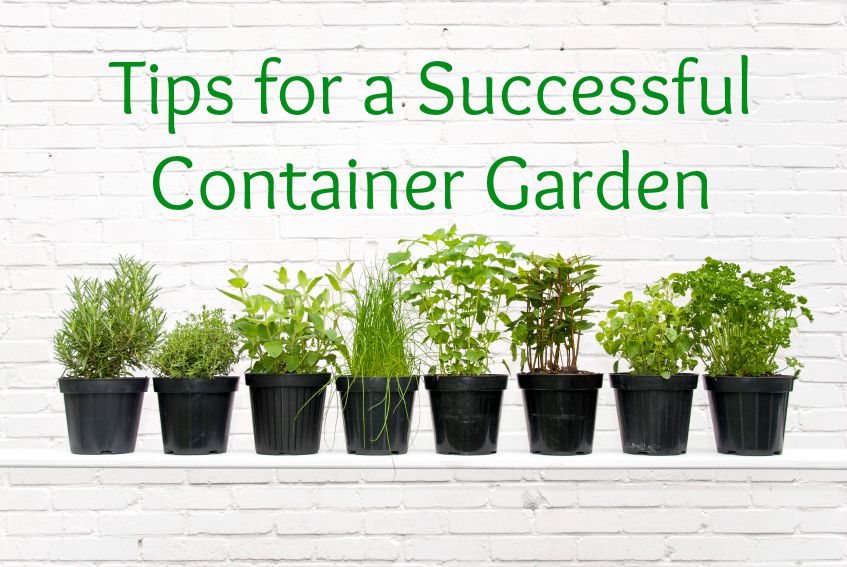
Gardening can be easier said than done. There are many factors to consider when growing your own produce – climate, soil, planting season, watering, drainage, harvest time, and pests. And then do you have adequate space and the time to maintain a garden? For those who would like to tip-toe into gardening, without the commitment of half of the backyard, or most of your evenings and weekends spent pruning, container gardens are a great option. Additionally, plants in containers are at a more comfortable level for those who may not be able to bend down to maintain a traditional garden.
Director of Lovelace Bariatrics, Dr. Duc Vuong, is a big advocate for growing your own produce and has even held a class on container gardening at Lovelace Westside Hospital. A fan of social media, Dr. Vuong shared his struggles as a gardener. One summer, New Mexico’s heat provided too strong of a threat, while this summer’s rain helped tremendously. Always the encourager, Dr. Vuong jumped at the chance to share a life lesson. "Last year everything died under the heat," he says in a post. "This year, I'm harvesting my first fruit. You see, I've changed. Even though the circumstances are the same, I've gotten better. And that's how we succeed in life. We change. We get better."
Make a plan
The first step in any successful garden, regardless of the size, is a good plan. Research the types of plants you would like to grow and learn what those plants need. Will they require full sun, partial sun, a lot of water or a lot of space? Here’s an example of 10 vegetables suitable for container gardening. Decide on your final list of plants and then determine the size of containers you need and where you have space close to a water supply. Shop your local nursery for transfer plants if you will not be growing your plants from seeds. This is especially helpful to new gardeners.
It’s more than just dirt
At first glance dirt is dirt, right? Not in the gardening world. To help give your plants the best shot of a successful harvest, the dirt, or soil, as it is more accurately named, is one of the driving components behind your plants’ growth. While experienced gardeners may prepare their own soil with organic matter (i.e. manure), you may want to go the route of purchasing container mix from your local nursery. This type of soil holds onto water longer. A fertilizer mixed in with the soil, along with a weekly water-soluble fertilizer will help provide nutrients to the plant, especially as regular watering drains nutrients away through the container.
Companion plants
Instead of your garden divided into rows of one plant next to rows of another plant, container gardening allows you to be somewhat more creative. Some plants do very well in the same container together. For example, tomatoes, basil and onions (almost tastes like a pizza) are a good plant combination. Other combinations are not such a good idea. For example, you want to stay away from tomatoes with potatoes. Companion plants also add visual interest to your containers. Here’s a more in-depth companion plant guide.
Container placement
Most vegetable plants require about six hours of sun. Other plants, like tomatoes, can do well in the sun all day. Make sure your containers are placed so that the plants receive the right amount of sunlight. Placing the containers on casters can be helpful if you need to move them into sunlight later in the day. Also, consider the amount of wind and try to place your containers so they are protected by a fence or wall. Larger container plants can also protect smaller ones.
Watering
Here’s something you may not be aware of when it comes to watering a vegetable garden: It is not the amount as much as it is the consistency that matters. Yes, plants need adequate moisture, but it is really important that the moisture level stay about the same. This helps protect against rot, insect problems and poor root development, to name a few common problems. If you are able to water at the same time consistently, that helps protect plants against these problems. However, if you are not always home at the same time or travel, you may want to consider self-watering planters. By filling the water reservoir as needed, you can ensure your plants’ water supply stays consistent.
Once you discover what plants work best for your yard, time and tastes you can add more containers and plants the next year, providing a fruitful harvest of fresh vegetables straight from your own garden. For more tips, follow us on Pinterest.
Lovelace Bariatrics is proud to be a Metabolic and Bariatric Surgery Accreditation and Quality Improvement Program. For more information, please call 505.898.1414 or click here.




